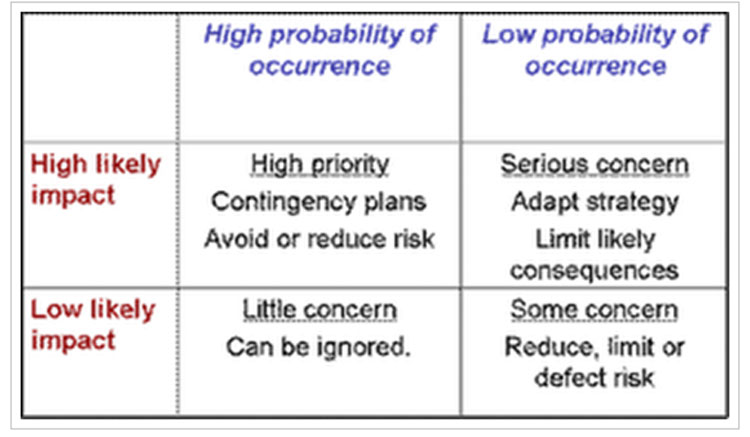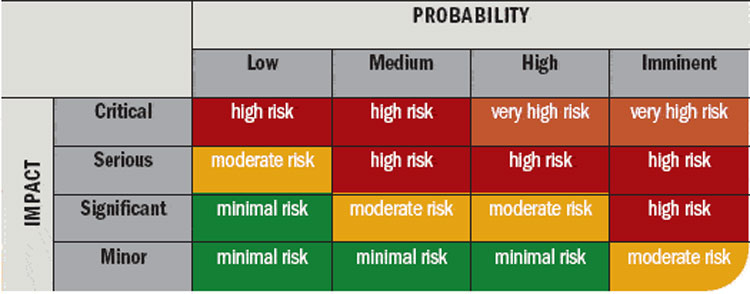Risk Management was one of the dominant themes of the recent Institute for Supply Management annual conference in Orlando, and with good reason, given a spate of recent events, most noteworthy the supply chain troubles coming from the earthquake in Japan. (See ISM 2011 Video Review and Comment.)
Risk management was in fact little talked a decade or so ago, but now it is near the top of every supply chain executive's priority list.
Many companies have or still use a simple 2 x 2 framework for assessing and managing risk, where on one dimension is the likellihood of occurrence (high or low) and the other the level of impact (high or low).
Simple 2 x 2 Risk Framework

Others have moved to a higher level of granularity, recognizing that there are more intervals of supply chain impact or likelihood than just High or Low. An example of this type of analysis framework is illustrated below.
Multi-Level Risk Framework

At the ISM conference, supply management veteran Robert Kemp made an interesting point during one session: that another dimesion beyond likelihood and impact needs to be added, and that is the likely velocity of the event or risk.
In other words, some risks - currency swings, for example - exist, but are likely to develop relatively slowly, giving time for the company to react, or have set of mitigation strategies that fit this type of development.
On the other hand, other theats - such as a natural disaster perhaps - might have an almost immediate impact.
So, you could have as just one example a low likelihood, big impact threat that is likely slow to be felt - or more rapidly. Some competitive risks could also fall into that rapid category.
Though you could argue that there is some overap between velocity and impact, we think there are also differneces, and that it makes a lot of sense to add velocity to these frameworks. We are strugling, however, to figure out how to represent that in a now three-dimensional image. Anyone with a bright idea please let us know at the Feedback button below,
Agree or
disagree? What is your perspective? Let
us know your thoughts at the Feedback button
below.
|